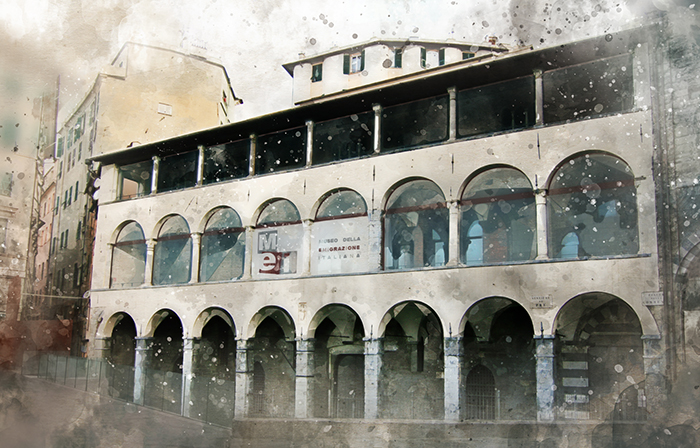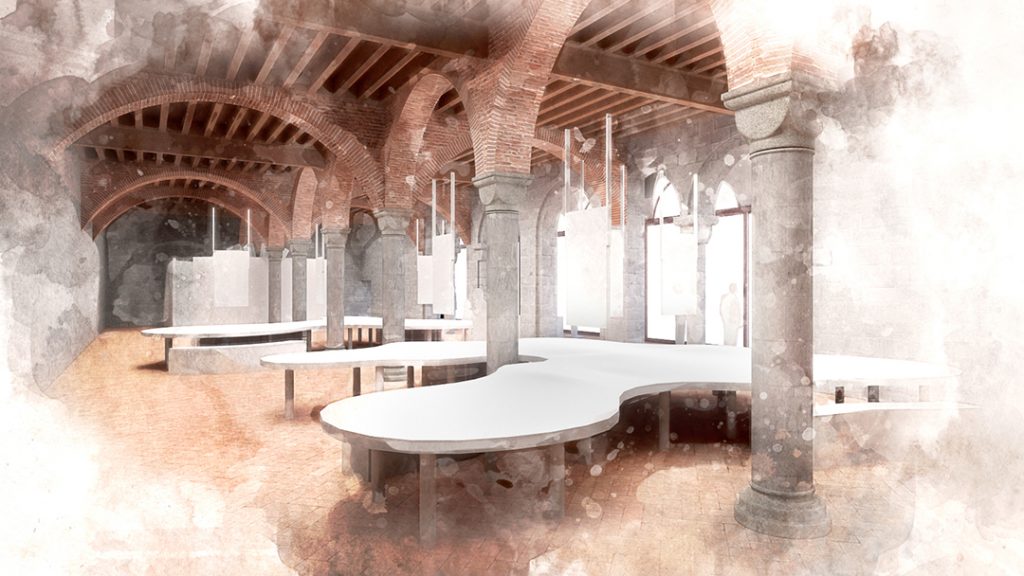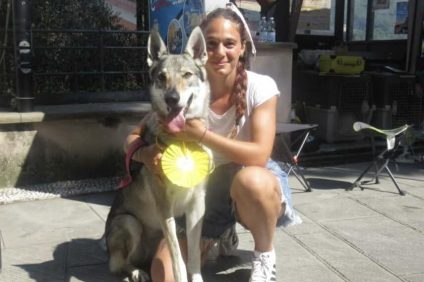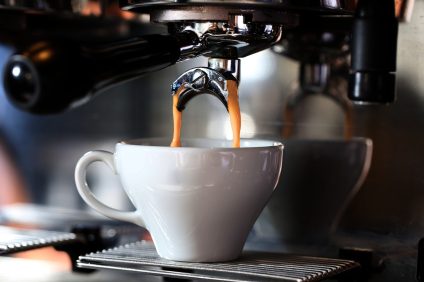Comunicato stampa
Work is underway for the functional and technological adaptation of the ancient building of the Commenda di San Giovanni di Prè, where the National Museum of Italian Emigration (MEI) will be housed, which was born from the strong desire to give back to the general public, national and international, the narration of a vast and diversified heritage such as that linked to the history of Italian emigration, a heritage physically widespread in numerous Italian and foreign locations, guarded by public and local institutions, archives, museums, study and research centers , associations of emigrants.

The interventions, for an amount of approximately 5,3 million euros (of which 300 thousand come from the San Paolo Foundation for the GenoVa, signed between the Municipality and the Government), concern thefunctional adaptation, the restoration and conservative rehabilitation of the Commenda and will last about a year.
Emigration is a strongly identifying theme for Genoa and is also closely linked to the imposing building chosen: the Commenda di Prè, a masterpiece of medieval art, which has always been animated by passages, travelers, ships. The Commenda, since the twelfth century was a shelter for pilgrims headed to the Holy Land.
It will be a museum suitable for all audiences, including schools and families, which will be able to speak to everyone through different languages and with innovative and interactive museological methods, aided by those technologies that can facilitate the conservation and dissemination of memory.

The National Museum of Italian Emigration (MEI) will be a moving museum
The MEI exhibition itinerary will be built around the life stories of the protagonists of emigration: the experiences of individuals will be offered to the visitor through primary sources such as autobiographies, diaries, letters, photographs, newspapers, songs and music. that accompanied the emigrants, the documents preserved by bodies, state and local institutions, archives, museums, associations of emigrants, which are part of the great network of collaboration that the MEI is building so that the new Museum is truly a participatory museum, capable of renewing itself .
All these documents will contribute to the creation of a single narrative, capable of not flattening the phenomenon but showing it through its many facets and articulations. MEI will be a moving museum: emigration is a journey, and those who enter will find themselves immersed in the journey among the images and stories of the millions of Italians who have left our country since the unification of Italy in 1861 to get to today.

The different "stations" that make up the route will be able to "speak" differently depending on the interlocutor who approaches: this thanks to a registration mechanism at the entrance that will allow you to calibrate languages, stories and documents based on the specific person who he is making the journey. The data on departures, returns, destinations, work, health, nutrition, racism, hospitality, the many different reasons for leaving Italy, which represent the great mosaic of migration will be communicated through tools that they will also make it possible to “take home” the contents, perhaps to reflect on them later, or to share them together through social networks.
There will also be a space for reflection, the "Memorial”Which through an artistic suggestion intends to be the emotionally highest point of the path. The history of Italian emigration is in fact marked by a series of painful episodes, sometimes collective. A space inside will allow you to deepen the episodes, from the events of Aigües Mortes (1893) to the Marcinelle massacre (1956), passing through mining disasters and shipwrecks.

Italian emigration did not only have its destination abroad and it does not belong only to the past. For this reason the Museum will also talk about internal emigration, declined in its two main directions, from the countryside to the city and from the South to the North, and contemporary emigration, with the forms it took on after 1973, the year of the epochal change, in which from a country of emigration, Italy becomes a country of immigration.
The museum itinerary will also integrate that of Galata Museum of the Sea, which for years has offered visitors an engaging multimedia experience with the Museum of Memory and Migration, an interactive journey that evokes the ocean crossing of Italian migrants aboard steamships to the United States and South America, Brazil andArgentina; and that in a specific section tells about contemporary immigration to Europe.

The documents used for the construction of the museum itinerary are the result of research and studies that have seen the fundamental support and the collaboration of scholars and institutions such as the International Center for Studies on Italian Emigration (CISEI) of Genoa, the National Diaristic Archive Foundation of Pieve Santo Stefano, the Pietro Conti di Gualdo Tadino Regional Emigration Museum, the Central Institute for sound and audiovisual goods, the Istituto Luce - Archivio Storico Luce, Rai, through the Rai-Teche Archive, the Central State Archive and the Diplomatic Historical Archive of the Ministry of Foreign Affairs and International Cooperation. There were also contacts with international museums and centers such as the Ellis Island National Museum of Immigration, the MUNTREF - Museo de la Inmigración in Buenos Aires and the Museu da Imigração do Estado de São Paulo in São Paulo.

A fundamental role is also played by the numerous associations of “Italians in the World”, a multiplicity of subjects often very active, both in Italy and abroad, in international relations and with a strong impact on the communities of Italian expatriates. The collaborations with these associations aim to make the museum being established a witness to the complexity of migratory phenomena and representative of all the regional realities of the country. The enthusiastic response of many of these associations has allowed the signing of memoranda of understanding aimed at the exchange of documentation, the transfer of knowledge and skills, laying the foundations for an "assembly of participants" of the Museum itself that will be able to give life to initiatives and initiatives in the future. activities both nationally and internationally.
Finally, the committee has developed an important and constructive dialogue with an institutional entity of great importance such as the Directorate General for Italians Abroad (DIGIT) of the Ministry of Foreign Affairs and International Cooperation, also signing a memorandum of understanding with the General Council of Italians abroad (CGIE).

"A great operation of popular and collective memory of our country - comments Paolo Masini, president of the Steering Committee for the realization of the MEI - Starting from individual personal stories, we get to reconstruct a phenomenon that is in the very soul of the roots of humanity. Women and men with the most diverse histories who have often been able to transform themselves into precious seeds in generous lands. "" An important project for history, culture and tourism that today reaches the executive stage - says the mayor of Genoa Marco Bucci -. We know that Genoa has played a strategic role in the history of Italian emigration thanks to its port, a crossroads of people, goods and cultures. “Dovve i Zeneixi vàn, 'n'atra Zena fan” said, according to tradition, the Genoese Anonymous: a testimony of our history as migrants of the world. History that will find space here, in rooms that have been renovated and redesigned for this purpose.
The MEI will also enjoy a strategic position: with the Aquarium and the Sea Museum close by, the Emigration Museum will complete a top-level museum and tourist offer. Thanks to all those who have collaborated in the creation of the museum ».
Info on the Commenda: http://www.visitgenoa.it/commenda-di-san-giovanni-di-pr%C3%A9-museoteatro




